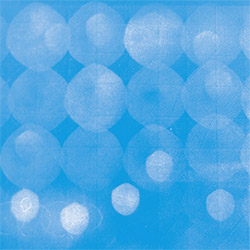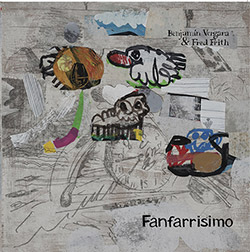![Suzuki, Akio: Zeitstudie [VINYL w/ DOWNLOAD] (Room40) Suzuki, Akio: Zeitstudie [VINYL w/ DOWNLOAD] (Room40)](https://www.teuthida.com/productImages/misc4/29769.jpg)
Referring to "Study Time", Zeitstudie presents two works each for two instruments developed by sound artist Akio Suzuki and recorded in Germany in 1984: the ANALAPOS, an echo instrument used to project the performer's voice across a coil spring; and the "De Koolmees" glass harmonica, 5 glass tubes in a metal frame that are struck or rubbed to create unique sounds.
Out of Stock
Quantity in Basket: None
Log In to use our Wish List
Shipping Weight: 24.00 units
Sample The Album:
Akio Suzuki-composer, performer
Click an artist name above to see in-stock items for that artist.
UPC: 739027482345
Label: Room40
Catalog ID: RM 4119LP
Squidco Product Code: 29769
Format: LP
Condition: New
Released: 2020
Country: Australia
Packaging: LP
Recorded in Germany in 1984.
"From Akio Suzuki: "In May 1984 I appeared at a German festival called Pro Musica Nova, organized by Radio Bremen. I then travelled to Berlin by car with Rolf Langebertels, the owner of Galerie Giannozzo who had driven to Bremen to hear me perform. I still remember very vividly the experience of passing through the checkpoint to enter West Berlin, a city that floated like an island in the middle of the still socialist GDR.
I had previously visited Berlin in 1982 to perform at Kunstlerhaus Bethanien at an event that Rolf had organized. This time too Rolf had organized a concert for me at the Technische Universitat. Playing off the title of the piece ('Study Time') I had performed at Pro Musica Nova, I titled the piece for this concert 'Zeitstudie'.
I owe Rolf a great deal of gratitude, as it was him who encouraged me by releasing my very first cassette tape, Zeitstudie von Akio Suzuki. In recent years it has become difficult for me to carry heavy instruments around with me, and I have started to do simpler performances with objects assembled on site . . .
On Zeitstudie von A.S. I used an ANALAPOS, the echo instrument I invented in 1970, and the Suzuki-type glass harmonica that I created in 1975. The ANALAPOS resembles the tin-can telephone that children used to play with: two metal cans, open at one end and connected by a coil spring. You play it by stretching out the spring horizontally and then projecting your voice into the open end of one of the cylinders. The second piece features a variation, where I would suspend several ANALAPOS vertically and play them like a percussion instrument.
The Suzuki-type glass harmonica is in a simpler form than the pre-existing glass harmonica, and consists of five long glass tubes of varying diameters suspended horizontally in a metal frame. As well as rubbing the tubes with wet hands, I developed my own style of playing it using sticks. Once when I was practicing with it in the Netherlands, outside the window I was surprised to hear a bird imitating my sounds. However, later I discovered that the bird always sang that way, and as a token of my regret for having ever doubted it, I borrowed the bird's Dutch name, De Koolmees, and I still use it for my instrument..."-Room40
Artist Biographies
• Show Bio for Akio Suzuki "Akio Suzuki is known as a pioneer of sound art, but the breadth of his activities and the form of his works far exceeds the normal boundaries of sound art. It is perhaps more as a "quester after sound and space" that he has received the most attention from artists in many fields.Suzuki's journey as an artist began in 1963 with a performance at Nagoya station, in which he threw a bucket full of junk down a staircase. The inspiration behind this performance - the idea that if one were to hurl an object down a well-balanced stairway, a pleasant rhythm might be the result - took the desire to "listen" as its subject. That desire to hear, to listen has remained the one constant in Suzuki's stance as an artist. During the sixties, Suzuki's sense of playfulness led him to undertake a series of Self-Study Events, where he explored the processes of "throwing" and "following", taking the natural world as his collaborator. The experiences he gained in these events led him in the seventies to invent an echo instrument he named Analapos. The instrument's structure resembles that of two mirrors facing each other, reflecting into infinity. As an extension of the principles underlying Analapos, Suzuki constructed the Hinatabokko no kukan (Space in the Sun) in 1988. This space consists of two huge parallel walls, in between which the artist can sit all day and purify his hearing by listening to the reflected sounds of nature. This space leads the artist to discover a new method of listening. Suzuki himself comments, "Sound, which had been conceptually imprisoned in various spaces, is freed to circle the world." From the late seventies and through the eighties, Suzuki also developed a form of performance he refers to as Conceptual Soundwork. Applying a number of self-imposed, simple and austere rules, he uses objects close at hand in a mode of "intellectual play". While these events do on the one hand express a critique of meaningless improvised performance, at the same time Suzuki is constantly aware of the audience's process of listening and he attempts to create contemporaneous connections with the site of performance. It was around this time that Suzuki began to travel frequently to the US and Europe, and his performances at leading music festivals, Festival d'Automne (Paris, 1978) and Documenta 8 (Kassel, 1987) were rapturously received. As sound art enjoyed a period of prosperity in the nineties, Suzuki was given the chance to create many installations, particularly in Berlin. Worthy of special note were his soundless installations, such as Otodate (Echo point, 1996) in Berlin, Enghien-les-Bains (since 1997, http://www.insitu-enghien.org/) and Strasbourg; Hana (Flower, 1997) at the Stadtgalarie Saarbrucken; and Pyramid (1999) which involved people excavating sounds. These soundless pieces were not designed to critique the old perceptual theories of music, rather they questioned the very location of music. Through their encounter with these works, the past experiences and memories of viewers were reconstructed as new experiences. This process was fundamental to the action of "listening" to the works. From the late seventies and through the eighties, Suzuki also developed a form of performance he refers to as Conceptual Soundwork. Applying a number of self-imposed, simple and austere rules, he uses objects close at hand in a mode of "intellectual play". While these events do on the one hand express a critique of meaningless improvised performance, at the same time Suzuki is constantly aware of the audience's process of listening and he attempts to create contemporaneous connections with the site of performance. It was around this time that Suzuki began to travel frequently to the US and Europe, and his performances at leading music festivals, Festival d'Automne (Paris, 1978) and Documenta 8 (Kassel, 1987) were rapturously received. As sound art enjoyed a period of prosperity in the nineties, Suzuki was given the chance to create many installations, particularly in Berlin. Worthy of special note were his soundless installations, such as Otodate (Echo point, 1996) in Berlin, Enghien-les-Bains (since 1997, http://www.insitu-enghien.org/) and Strasbourg; Hana (Flower, 1997) at the Stadtgalarie Saarbrucken; and Pyramid (1999) which involved people excavating sounds. These soundless pieces were not designed to critique the old perceptual theories of music, rather they questioned the very location of music. Through their encounter with these works, the past experiences and memories of viewers were reconstructed as new experiences. This process was fundamental to the action of "listening" to the works." ^ Hide Bio for Akio Suzuki
4/22/2024
Have a better biography or biography source? Please Contact Us so that we can update this biography.
Track Listing:
SIDE A
1. Standtype "ANALAPOS -b" 17:05
2. Suzuki Type Glasharmonika "De Koolmees" (Wet Hands Method) 8:30
SIDE B
1. "De Koolmees" (Stick Percussion Method) 9:10
2. Voice "ANALAPOS -a" 17:12
Vinyl Recordings
Electro-Acoustic
Electro-Acoustic Improv
Improvised Music
Objects and Home-made Instruments
Solo Artist Recordings
New in Experimental & Electronic Music
Search for other titles on the label:
Room40.


![Suzuki, Akio: Zeitstudie [VINYL w/ DOWNLOAD] (Room40) Suzuki, Akio: Zeitstudie [VINYL w/ DOWNLOAD] (Room40)](https://www.teuthida.com/productImages/full/29769.Full.jpg)





